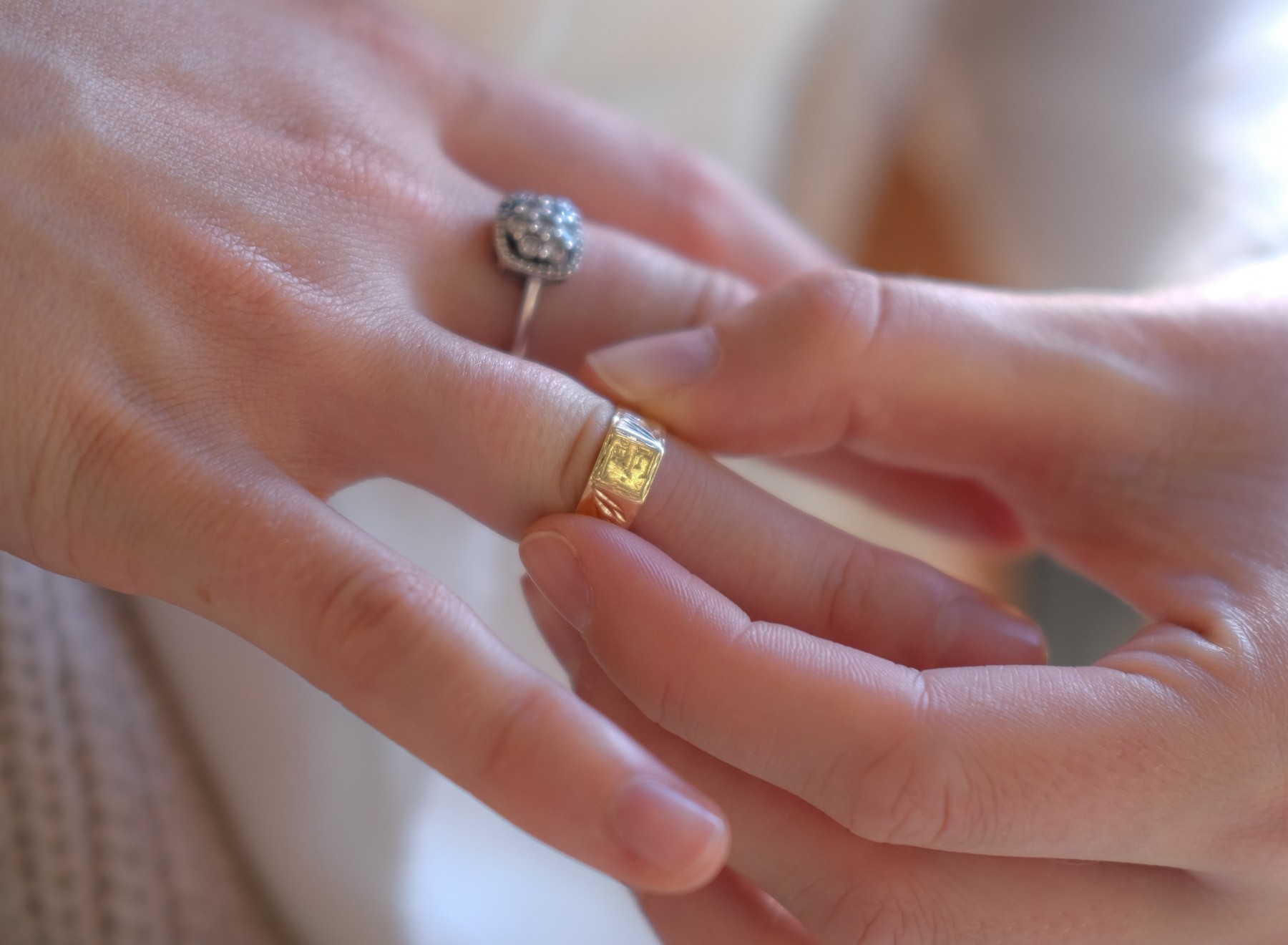The new Nickel Release method is now live in the EU, having entered into force on 1st April 2013. The old testing method EN 1811: 1998 has been superseded by EN 1811: 2011 and testing via this new method will, in effect, reduce the compliance level significantly. For full details click here.
All items which are to be sold in the EU which are intended to come into prolonged and direct contact with the skin must comply with the new regulations from 1st April 2013. Â
The Laboratory at The Birmingham Assay Office has therefore withdrawn Nickel release testing to EN 1811:1998. Any items received for nickel release testing will now automatically be tested to EN 1811:2011.
Regulations for the UK have been in force since 1st March 2013. All items which are to be sold in the UK which are intended to come into prolonged and direct contact with the skin must also comply with these new regulations - BS EN 1811: 2011.
The Laboratory at The Birmingham Assay Office has responded to these changes and now offers both a UKAS accredited Full Nickel Release test (EN 1811:2011) and a UKAS Accredited Quick Nickel Release test (2011) to check that they comply with new Nickel regulations. EN 16128:2011 is also offered for testing spectacle frames.
The Quick Nickel Release (2011) test is a UKAS accredited test, unique to The Birmingham Assay Office, it is quicker and cheaper than the full reference test and has been validated by significant data and approved by all the big retailers. In the majority of cases (more than 98.8%), passing the âQuick Nickel testâ indicates that items will pass EN 1811 / EN 12472 and comply with the Nickel Directive. This is an acceptable level of certainty from a scienti?c point of view. To download a Nickel testing application form click here.      Â
![nixon-watches-minus-Brand[1]](/wx-uploads/img/large/archive/2013/04/nixon-watches-minus-Brand1-300x300.jpg) SELL THROUGH PERIOD
No sell through periods for existing stock have been specified and the final interpretation will inevitably be through case law. To try to get a sense of the way the authorities view the situation The Laboratory at The Birmingham Assay Office sought the opinion of The British Standards Institute. The BSI are not lawyers and are unable to give a definitive interpretation but, their unofficial opinion is as follows:-
âAccording to the EN Foreword, EN 1811:2011 is a mandated standard, so from 1st March 2013, all products have to be tested to it. However, products tested prior to 1st March 2013 do not need to be re-tested to the new standard. It should, of course, be made clear to the consumer which standard the product is tested to. Â Those in the industry should know that the change is due to take place and act accordingly from the relevant date.â
SELL THROUGH PERIOD
No sell through periods for existing stock have been specified and the final interpretation will inevitably be through case law. To try to get a sense of the way the authorities view the situation The Laboratory at The Birmingham Assay Office sought the opinion of The British Standards Institute. The BSI are not lawyers and are unable to give a definitive interpretation but, their unofficial opinion is as follows:-
âAccording to the EN Foreword, EN 1811:2011 is a mandated standard, so from 1st March 2013, all products have to be tested to it. However, products tested prior to 1st March 2013 do not need to be re-tested to the new standard. It should, of course, be made clear to the consumer which standard the product is tested to. Â Those in the industry should know that the change is due to take place and act accordingly from the relevant date.â
 With this in mind The Laboratory at The Birmingham Assay Office then asked the UK REACH Helpdesk the following question:-
ââIf a retailer puts an article on sale in the UK during February which is compliant when tested by BS EN 1811:1999 and has a test report to prove it and the article is then selected by Trading Standards for checking on 3rd March 2013 and It proves not to be compliant when tested by BS EN 1811: 2011. Has the retailer committed an offence?ââ
The answer received from the UK REACH Helpdesk is as follows:-
âTechnically, yes. How such a breach would be dealt with will depend on the particular circumstances of the case. It will be up to the relevant enforcement agency to decide what to do about such a breach. Note that the updated test guideline has been in place since August 2011 and so suppliers have had around 18 months in which to plan for the transition to the updated test. As the implementation date for the updated test approaches it makes sense to use that method for stocks for which it can be anticipated that they will remain in the supply chain after the implementation dateâ
Separate advice obtained by the British Jewellers Association (BJA) from The Health and Safety Executive (HSE), states:-
ââThe HSE have indicated that providing that it can be demonstrated that the articles were compliant with the 1998 test when they were first placed on the market they would allow these to filter through the supply chain.ââ
Essentially it is down to retailers to apply the principles of due diligence â i.e. taking all reasonable steps in order to protect themselves and the consumer.
With this in mind The Laboratory at The Birmingham Assay Office then asked the UK REACH Helpdesk the following question:-
ââIf a retailer puts an article on sale in the UK during February which is compliant when tested by BS EN 1811:1999 and has a test report to prove it and the article is then selected by Trading Standards for checking on 3rd March 2013 and It proves not to be compliant when tested by BS EN 1811: 2011. Has the retailer committed an offence?ââ
The answer received from the UK REACH Helpdesk is as follows:-
âTechnically, yes. How such a breach would be dealt with will depend on the particular circumstances of the case. It will be up to the relevant enforcement agency to decide what to do about such a breach. Note that the updated test guideline has been in place since August 2011 and so suppliers have had around 18 months in which to plan for the transition to the updated test. As the implementation date for the updated test approaches it makes sense to use that method for stocks for which it can be anticipated that they will remain in the supply chain after the implementation dateâ
Separate advice obtained by the British Jewellers Association (BJA) from The Health and Safety Executive (HSE), states:-
ââThe HSE have indicated that providing that it can be demonstrated that the articles were compliant with the 1998 test when they were first placed on the market they would allow these to filter through the supply chain.ââ
Essentially it is down to retailers to apply the principles of due diligence â i.e. taking all reasonable steps in order to protect themselves and the consumer.
![Costume-advertising[1]](/wx-uploads/img/large/archive/2013/04/Costume-advertising1-300x178.jpg) NUMBER OF SAMPLES
The new test recommends that three different samples are tested âwherever possibleâ. As a separate issue, due to the lower compliance rate and the increased sensitivity of the tests, an accurate result is only possible if the sample has sufficient surface area to measure it accurately. The Standard states the minimum surface area required to test is 0.2cmsq, however The Laboratory at The Birmingham Assay Office identified that a component with less surface area than 0.8cmsq (equivalent to two pairs of earring posts) can influence the results. This could lead to a result being reported as a no decision when it could pass if more surface area were tested. The Laboratory is therefore asking customers to send multiple samples of small components such as post assemblies, crowns, crimps and jump rings.
To discuss the New Nickel Regulations or to enquire about Nickel testing please contact The Laboratory T: 0871 871 6020 or E: testing@thelaboratory.co.uk
NUMBER OF SAMPLES
The new test recommends that three different samples are tested âwherever possibleâ. As a separate issue, due to the lower compliance rate and the increased sensitivity of the tests, an accurate result is only possible if the sample has sufficient surface area to measure it accurately. The Standard states the minimum surface area required to test is 0.2cmsq, however The Laboratory at The Birmingham Assay Office identified that a component with less surface area than 0.8cmsq (equivalent to two pairs of earring posts) can influence the results. This could lead to a result being reported as a no decision when it could pass if more surface area were tested. The Laboratory is therefore asking customers to send multiple samples of small components such as post assemblies, crowns, crimps and jump rings.
To discuss the New Nickel Regulations or to enquire about Nickel testing please contact The Laboratory T: 0871 871 6020 or E: testing@thelaboratory.co.uk

 Read our blog    www.assaynews.co.uk/the-laboratory/
Read our blog    www.assaynews.co.uk/the-laboratory/
 Like us on FaceBook  www.facebook.com/baolaboratory
Like us on FaceBook  www.facebook.com/baolaboratory
 Follow us on Twitter @TheAssayOffice
Follow us on Twitter @TheAssayOffice
 Subscribe to our YouTube channel BAO1773Â
Subscribe to our YouTube channel BAO1773Â
![nixon-watches-minus-Brand[1]](/wx-uploads/img/large/archive/2013/04/nixon-watches-minus-Brand1-300x300.jpg) SELL THROUGH PERIOD
No sell through periods for existing stock have been specified and the final interpretation will inevitably be through case law. To try to get a sense of the way the authorities view the situation The Laboratory at The Birmingham Assay Office sought the opinion of The British Standards Institute. The BSI are not lawyers and are unable to give a definitive interpretation but, their unofficial opinion is as follows:-
âAccording to the EN Foreword, EN 1811:2011 is a mandated standard, so from 1st March 2013, all products have to be tested to it. However, products tested prior to 1st March 2013 do not need to be re-tested to the new standard. It should, of course, be made clear to the consumer which standard the product is tested to. Â Those in the industry should know that the change is due to take place and act accordingly from the relevant date.â
SELL THROUGH PERIOD
No sell through periods for existing stock have been specified and the final interpretation will inevitably be through case law. To try to get a sense of the way the authorities view the situation The Laboratory at The Birmingham Assay Office sought the opinion of The British Standards Institute. The BSI are not lawyers and are unable to give a definitive interpretation but, their unofficial opinion is as follows:-
âAccording to the EN Foreword, EN 1811:2011 is a mandated standard, so from 1st March 2013, all products have to be tested to it. However, products tested prior to 1st March 2013 do not need to be re-tested to the new standard. It should, of course, be made clear to the consumer which standard the product is tested to. Â Those in the industry should know that the change is due to take place and act accordingly from the relevant date.â
 With this in mind The Laboratory at The Birmingham Assay Office then asked the UK REACH Helpdesk the following question:-
ââIf a retailer puts an article on sale in the UK during February which is compliant when tested by BS EN 1811:1999 and has a test report to prove it and the article is then selected by Trading Standards for checking on 3rd March 2013 and It proves not to be compliant when tested by BS EN 1811: 2011. Has the retailer committed an offence?ââ
The answer received from the UK REACH Helpdesk is as follows:-
âTechnically, yes. How such a breach would be dealt with will depend on the particular circumstances of the case. It will be up to the relevant enforcement agency to decide what to do about such a breach. Note that the updated test guideline has been in place since August 2011 and so suppliers have had around 18 months in which to plan for the transition to the updated test. As the implementation date for the updated test approaches it makes sense to use that method for stocks for which it can be anticipated that they will remain in the supply chain after the implementation dateâ
Separate advice obtained by the British Jewellers Association (BJA) from The Health and Safety Executive (HSE), states:-
ââThe HSE have indicated that providing that it can be demonstrated that the articles were compliant with the 1998 test when they were first placed on the market they would allow these to filter through the supply chain.ââ
Essentially it is down to retailers to apply the principles of due diligence â i.e. taking all reasonable steps in order to protect themselves and the consumer.
With this in mind The Laboratory at The Birmingham Assay Office then asked the UK REACH Helpdesk the following question:-
ââIf a retailer puts an article on sale in the UK during February which is compliant when tested by BS EN 1811:1999 and has a test report to prove it and the article is then selected by Trading Standards for checking on 3rd March 2013 and It proves not to be compliant when tested by BS EN 1811: 2011. Has the retailer committed an offence?ââ
The answer received from the UK REACH Helpdesk is as follows:-
âTechnically, yes. How such a breach would be dealt with will depend on the particular circumstances of the case. It will be up to the relevant enforcement agency to decide what to do about such a breach. Note that the updated test guideline has been in place since August 2011 and so suppliers have had around 18 months in which to plan for the transition to the updated test. As the implementation date for the updated test approaches it makes sense to use that method for stocks for which it can be anticipated that they will remain in the supply chain after the implementation dateâ
Separate advice obtained by the British Jewellers Association (BJA) from The Health and Safety Executive (HSE), states:-
ââThe HSE have indicated that providing that it can be demonstrated that the articles were compliant with the 1998 test when they were first placed on the market they would allow these to filter through the supply chain.ââ
Essentially it is down to retailers to apply the principles of due diligence â i.e. taking all reasonable steps in order to protect themselves and the consumer.
![Costume-advertising[1]](/wx-uploads/img/large/archive/2013/04/Costume-advertising1-300x178.jpg) NUMBER OF SAMPLES
The new test recommends that three different samples are tested âwherever possibleâ. As a separate issue, due to the lower compliance rate and the increased sensitivity of the tests, an accurate result is only possible if the sample has sufficient surface area to measure it accurately. The Standard states the minimum surface area required to test is 0.2cmsq, however The Laboratory at The Birmingham Assay Office identified that a component with less surface area than 0.8cmsq (equivalent to two pairs of earring posts) can influence the results. This could lead to a result being reported as a no decision when it could pass if more surface area were tested. The Laboratory is therefore asking customers to send multiple samples of small components such as post assemblies, crowns, crimps and jump rings.
To discuss the New Nickel Regulations or to enquire about Nickel testing please contact The Laboratory T: 0871 871 6020 or E: testing@thelaboratory.co.uk
NUMBER OF SAMPLES
The new test recommends that three different samples are tested âwherever possibleâ. As a separate issue, due to the lower compliance rate and the increased sensitivity of the tests, an accurate result is only possible if the sample has sufficient surface area to measure it accurately. The Standard states the minimum surface area required to test is 0.2cmsq, however The Laboratory at The Birmingham Assay Office identified that a component with less surface area than 0.8cmsq (equivalent to two pairs of earring posts) can influence the results. This could lead to a result being reported as a no decision when it could pass if more surface area were tested. The Laboratory is therefore asking customers to send multiple samples of small components such as post assemblies, crowns, crimps and jump rings.
To discuss the New Nickel Regulations or to enquire about Nickel testing please contact The Laboratory T: 0871 871 6020 or E: testing@thelaboratory.co.uk

Â
STAY UP TO DATE WITH THE ALL THE LATEST NEWS FROM THE LABORATORYÂ Â
 Read our blog    www.assaynews.co.uk/the-laboratory/
Read our blog    www.assaynews.co.uk/the-laboratory/
 Like us on FaceBook  www.facebook.com/baolaboratory
Like us on FaceBook  www.facebook.com/baolaboratory
 Follow us on Twitter @TheAssayOffice
Follow us on Twitter @TheAssayOffice
 Subscribe to our YouTube channel BAO1773Â
Subscribe to our YouTube channel BAO1773Â
Your item has been added to the basket
You need to create an account, or login before you can add this item to your basket.









